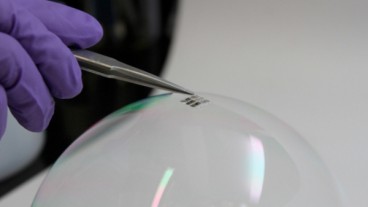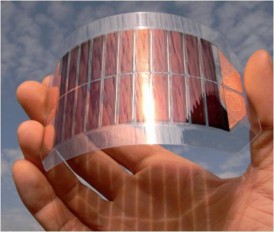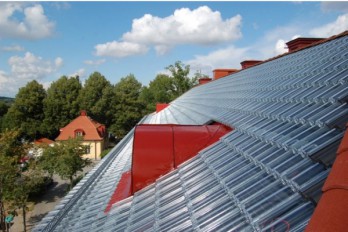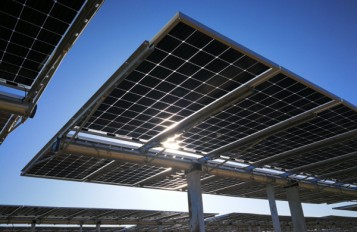In the near future, smartphones could be charged via photovoltaic cells attached on their back side

The technology used is based on a mineral called perovskite
The technology used is based on a mineral called perovskite
Photovoltaic cells made of perovskite are lightweight, flexible and can be easily incorporated into a smartphone. SAULE Technologies is aiming to commercialize them soon. Their first prototype, which was presented last March at the International Conference on Perovskite Thin Film Photovoltaics (ABXPV) in Barcelona, provides enough power to charge up a phone battery through exposure to even artificial light sources. Perovskites are great light absorbers and thus ultra-thin layers of them can suffice for the job at hand, reducing the consumption of materials needed to produce a cell at least three times. Perovskites are also cheaper, thinner and more flexible than silicon.
Olga Malinkiewicz, SAULE Technologies co-founder and CTO, recipient of the European Commission award Photonics21, and MIT Technology Review’s Innovator of the Year said: "This is a special moment for all our team. We have reached that phase when we can finally show the results of our work. The prototype presented today - small, flexible, perovskite module - is just the beginning. With subsidies we have received from the National Centre for Research and Development (NCBR) and contribution made by a Japanese investor, we can now boost the efficiency of the module and further refine the technology in our own, well-equipped lab.” Malinkiewicz gives a technical glimpse into these future developments: “The challenge now is to integrate each, separate process into one production line. For that we use ink-jet printing as it is a rather straightforward way to do it.”
The next step: Perovskite on buildings
Solar cells made of perovskite are still less efficient than those of crystalline silicon, CdTe and CIGS, but can be used in buildings without affecting their architecture. For example, they can be attached to glass panels transforming them into photovoltaic ones, while sacrificing very little transparency. It will also be possible to cover roof tiles with perovskite cells, converting an entire roof into a huge photovoltaic panel, or even the entire facades of modern buildings, so that the walls could generate electricity as well. Saule Technologies is currently working on all these applications.
Media
Want to read more like this story?

Introducing the thinnest solar cell ever created!
Mar, 09, 2016 | NewsImagine a photovoltaic cell 50 times thinner than a human hair… Now it is real! Yet, only in...

UK’s first energy-positive office opens in Swansea
Jul, 16, 2018 | NewsThe UK's first energy-positive classroom generates more than one and a half times the solar energy i...

Fullerene-free polymer solar cells exhibiting great efficiency and stability have been invented
May, 27, 2016 | NewsPolymer solar cells can now be even cheaper and more reliable thanks to this new breakthrough Pol...

New thermochromic windows that function as photovoltaics have been developed
Jan, 05, 2018 | NewsThese photovoltaic windows were an accidental discovery at the National Renewable Energy Laboratory...

Can glass produce electricity? A Swedish company claims that it can!
Oct, 04, 2017 | NewsThey produce semi-transparent solar panels that can generate solar energy from glass facades, window...

New formula calculates power produced by the unlit side of solar panels
Jan, 10, 2020 | NewsA new study reveals a formula that calculates the amount of energy that solar panels can produce usi...

Paving the way to the future
Feb, 17, 2016 | NewsFrance is the first country to install solar panels onto 1000km of public roads The French govern...

The most innovative and sustainable office building in the world
Apr, 15, 2016 | NewsIt is called ‘The Edge’ and is located in the business district of Amsterdam, in the Net...

Energy storage could take renewable technology to a whole new level …
Jul, 04, 2016 | NewsStorage systems can make economic sense for renewable energy sources such as wind and solar, accordi...
Trending

Vertical gardens in Mexico City to combat pollution

Saudi Park Closed After 360 Big Pendulum Ride Crashes to Ground, 23 injured

Characteristics of Load Bearing Masonry Construction

Taipei 101’s impressive tuned mass damper

Dutch greenhouses have revolutionized modern farming

Federal court rules Biden’s offshore drilling ban unlawful


